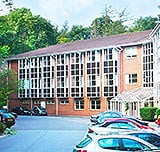
Osteoporosis causes your bones to become weak and brittle, making them prone to fractures even from simple actions like bending or coughing. It most commonly affects your hips, wrists, and spine. A healthy lifestyle, along with medication and exercise, can help prevent bone loss and support stronger bones.
Osteoporosis is a condition where your bones gradually become thinner, more porous, and fragile, increasing your risk of fractures. Bone is living tissue that constantly regenerates, but after your peak bone mass, usually reached in your early 30s, this balance shifts. Over time, bone loss begins to outpace bone formation, and bones weaken.
This process speeds up with age, and is more pronounced in women after menopause due to a drop in protective hormones like oestrogen.
Most people are unaware they have osteoporosis until they experience a fracture, often in their hips, wrists, or spine, from a minor fall or even a simple movement. Early diagnosis using a bone density scan can help prevent complications and guide effective treatment.
Osteoporosis is often called a “silent disease” because it typically causes no symptoms until a bone breaks. Many people don’t realise they have it until they experience a fracture from a minor fall or a simple movement.
Sudden fractures from low-impact injuries (especially in your hip, wrist, or spine)
Back pain, often from collapsed or fractured spinal bones
Loss of height over time
Stooped posture or curvature of your spine
Bone pain or tenderness, especially in your lower back.
Receding gums or dental changes (linked to jaw bone loss)
Weak grip strength
Brittle nails
Shortness of breath - if spinal compression fractures lead to a curved posture that restricts your lung capacity.
If you notice any of these changes, especially if you’re over 50, have a family history, or you’re postmenopausal, it’s worth speaking to your doctor about a bone density scan. Early testing, like a DEXA scan, can help prevent future fractures.
Osteoporosis occurs when your body loses bone faster than it can rebuild it. Bone is living tissue that constantly renews itself, but after your early 30s, this process slows. Over time, bones become thinner, less dense, and more fragile.
Several factors can increase your risk of developing osteoporosis:
Ageing – natural bone loss accelerates after age 35
Menopause – reduced oestrogen levels speed up bone breakdown
Low calcium or vitamin D intake – weakens bone formation
Medical conditions – such as rheumatoid arthritis, thyroid disorders, or malabsorption issues
Medications – long-term use of steroids, cancer treatments, or seizure medications
Lifestyle factors – smoking, heavy alcohol use, poor diet, and lack of weight-bearing exercise
Low body weight or BMI – less bone mass to draw from
Family history – especially if a parent had a hip fracture.
Understanding these causes can help you to take proactive steps to protect your bone health and reduce your risk of fractures.
Understanding osteoporosis risk factors can help you take proactive steps - some are beyond your control, while others are related to lifestyle, hormones, nutrition, and medical history.
These are factors you can’t control but may increase your likelihood of developing osteoporosis:
Age - bone density naturally declines after age 35
Sex - women, especially postmenopausal, are at higher risk
Ethnicity - white and Asian individuals are more commonly affected
Family history - a parent or sibling with osteoporosis or hip fracture increases your risk
Body frame size - smaller frames mean less bone mass to draw from as you age.
Hormone imbalances can accelerate bone loss:
Low oestrogen - common after menopause or with breast cancer treatment
Low testosterone - can affect men, especially with prostate cancer therapy
Thyroid disorders - overactive thyroid or excessive thyroid medication
Parathyroid and adrenal gland disorders - can disrupt bone metabolism.
Poor nutrition can weaken bones over time:
Low calcium or vitamin D intake
Eating disorders - such as anorexia or bulimia
Malabsorption issues - conditions like coeliac or Crohn’s disease
Gastrointestinal surgery - reduces nutrient absorption.
Certain health issues are linked to increased bone loss:
Rheumatoid arthritis
Diabetes and thyroid disease
Kidney or liver disease
Multiple myeloma and other cancers.
Some drugs can interfere with bone strength:
Long-term corticosteroids (e.g. prednisone)
Anti-seizure medications
Hormone therapies for cancer
Proton pump inhibitors - may affect calcium absorption
Diuretics and anticoagulants.
Daily habits play a big role in bone health:
Sedentary lifestyle - lack of weight-bearing exercise
Smoking - linked to reduced bone formation
Excessive alcohol - more than two drinks per day can weaken bones
Low body weight or BMI.
Osteoporosis is typically diagnosed through a combination of clinical assessment and imaging tests that measure bone strength and density.
Your doctor will begin with a physical exam and ask about your medical history, including:
Any previous fractures
Family history of osteoporosis
Lifestyle factors like diet, exercise, smoking, and alcohol use
Menstrual history (for women).
They may also use tools like FRAX or Q-Fracture to estimate your future risk of breaking a bone.
The most common and reliable test to get an osteoporosis diagnosis is a bone density scan, also known as a DEXA scan. This quick, painless procedure uses low-dose X-rays to measure how dense your bones are, usually focusing on your hip and spine, where fractures are most likely to occur.
You lie on a padded table while a scanner passes over your body. The scan compares your bone density to that of a healthy young adult. Results are given as a T-score:
Above -1: Normal
Between -1 and -2.5: Osteopenia (mild bone loss)
Below -2.5: Osteoporosis
Osteoporosis treatment focuses on slowing bone loss, strengthening bones, and reducing your risk of fractures. Most patients benefit from a combination of lifestyle changes, medication, and targeted therapies.
Regular exercise helps maintain bone strength and improve balance, reducing your risk of falls and fractures. Recommended activities include:
Weight-bearing exercises - walking, stair climbing, dancing
Balance and flexibility - yoga, Pilates, tai chi
Resistance training - light weights or resistance bands to build muscle.
A physiotherapist can tailor exercises to your needs and ensure movements are safe and effective.
Medications help slow bone breakdown or stimulate bone formation. Common options include:
Bisphosphonates - (e.g. alendronate, risedronate). Oral or injectable; may cause stomach upset, or rarely bone/jaw side effects
Denosumab - a twice-yearly injection that boosts bone density and slows bone loss
Parathyroid hormone analogs - (teriparatide, abaloparatide). Daily injections that stimulate new bone growth, typically used for severe osteoporosis.
Hormone-related treatments may be used depending on your age, sex, and risk factors:
Oestrogen therapy - helps maintain bone density in postmenopausal women. It may increase your risk of blood clots or breast cancer
Raloxifene (Evista) - mimics oestrogen’s bone-protective effects. It can reduce your spinal fracture risk
Testosterone therapy - may help men with low hormone levels. It’s often used alongside other osteoporosis medications.
You should discuss the risks and benefits with your GP to find the right option.
These nutrients are essential for bone health:
Calcium - most adults need at least 700 mg daily. Supplements may be needed if you have a low dietary intake
Vitamin D - helps absorb calcium; 10 micrograms daily is recommended. Sunlight provides natural vitamin D, but supplements are advised in autumn and winter.
Your GP can guide you on safe dosages and whether supplements are necessary.
If you’re wondering how to prevent osteoporosis, there are lifestyle changes that can help protect your bones, keep them stronger for longer, and lower your chances of developing the condition:
Eat calcium-rich foods - dairy, leafy greens, and fortified products
Get enough vitamin D - through sunlight, food, or supplements (10 micrograms/day)
Exercise regularly - weight-bearing and resistance activities like walking, yoga, and strength training
Avoid smoking and excessive alcohol - both can weaken bone structure
Maintain a healthy weight - being underweight or inactive increases your risk.
Osteopenia is the stage of bone loss that comes before osteoporosis. It means your bones have less density than normal but are not yet fragile enough to be considered osteoporosis. The main difference lies in severity. Osteopenia indicates mild bone loss, while osteoporosis reflects significant loss, with bones more likely to break easily.
In osteopenia, you may not have any symptoms, and your fracture risk is only slightly increased. Osteoporosis, on the other hand, can lead to height loss, back pain, posture changes, and a much higher chance of breaking a bone from even minor accidents.
Importantly, osteopenia doesn't always lead to osteoporosis, it depends on factors like age, hormone levels, health conditions, and lifestyle habits. If you're diagnosed with osteopenia, steps like dietary changes, regular exercise, and sometimes medication can help strengthen your bones and prevent further decline.
Osteoporosis and osteomalacia both weaken your bones, but in different ways. Osteoporosis involves a loss of bone mass, making your bones thin and fragile, while the ratio of bone mineral to structure stays normal. It's caused by a combination of ageing, hormonal changes, and increased bone breakdown. In contrast, osteomalacia is due to poor bone mineralisation, often from severe vitamin D deficiency, which results in soft, poorly hardened bones.
While both conditions can lead to fractures and share similar symptoms like bone pain or weakness, osteomalacia may also cause muscle discomfort and unusual fracture patterns (such as ribs). Diagnosis involves bone density scans and blood tests, and though they can coexist, treatments differ. Osteomalacia requires correcting vitamin D levels, while osteoporosis focuses on preventing further bone loss.
Not exactly. Osteoporosis is a chronic condition, meaning it doesn’t go away completely. However, it can be managed effectively. Treatments aim to slow or stop bone loss, improve bone density, and reduce your risk of fractures
Medications like bisphosphonates or denosumab help slow bone breakdown, while others like teriparatide stimulate new bone growth.
Yes, genetics play a major role. About 75% of your bone density is determined by your genes. If a parent or sibling has osteoporosis, especially if they've had a hip fracture, your risk increases significantly. Specific gene variants like VDR and COL1A1 are linked to bone fragility.
Osteoporosis itself is often called the “silent disease” because it usually progresses without noticeable symptoms. So, if you’re wondering does osteoporosis cause pain? Not directly - pain typically arises only after a fracture occurs. Common sources of pain include:
Spinal compression fractures, causing sudden or chronic back pain
Hip or wrist fractures, which can be severely painful and disabling.
While osteoporosis itself may not cause pain, fractures resulting from weakened bones often do. The pain can vary depending on the location and severity of the injury. It's commonly experienced as:
Dull or aching back pain
Sharp pain if a vertebra collapses
Muscle spasms or cramping
Difficulty bending, twisting, or walking.
Pain may ease when lying down but worsen with movement.
Osteoporosis itself doesn’t directly shorten life, but fractures especially hip fractures, can. After a hip fracture:
Up to 22% of people die within a year due to complications
Recovery can be difficult, especially for older adults.
Early diagnosis and treatment can significantly improve outcomes.
Yes, with the right approach. While you can’t reverse it entirely, you can:
Take medications to slow bone loss
Eat a calcium- and vitamin D-rich diet
Exercise regularly (especially weight-bearing and resistance exercises)
Avoid smoking and limit alcohol.
It weakens your bones, making them fragile and prone to fractures. Common effects include loss of height, stooped posture (kyphosis), and increased risk of fractures from minor falls or even coughing.
Not directly, but fatigue can be a side effect of living with osteoporosis. Pain from fractures, poor sleep due to discomfort, and side effects from medications (like bisphosphonates or denosumab) can all contribute to feeling worn out. Additionally, if you're less active due to fear of falling or injury, your muscles may weaken making everyday tasks more exhausting.
It can be, depending on how severely it affects your mobility and daily life. In the UK, osteoporosis may qualify for disability benefits if fractures or chronic pain limit your ability to work or perform everyday tasks. In other countries, eligibility varies, but it's often assessed based on the impact of fractures and functional limitations.
There are four different stages of osteoporosis.
Stage 1 - balanced bone turnover
Bone loss and bone formation are equal. You’re still producing enough bone to offset natural loss, and there are no symptoms. Bone density scores are normal (above -1).
Stage 2 - osteopenia (early bone loss)
Bone loss begins to outpace bone formation. There are still no obvious symptoms, but your bone density may fall between -1 and -2.5. This is called osteopenia, a precursor to osteoporosis.
Stage 3 - osteoporosis
Bone density drops significantly (below -2.5), and bones become fragile. You’re at higher risk for fractures, though symptoms may not appear unless a bone breaks.
Stage 4 - severe osteoporosis
This advanced stage involves very low bone density and visible symptoms like loss of height, stooped posture, and frequent fractures often in your spine, hips, or wrists.
Avoid activities that increase your risk of fractures:
High-impact exercises like running or jumping
Twisting or bending at the waist (e.g. sit-ups, toe touches)
Heavy lifting with poor posture
Smoking and excessive alcohol
Diet high in salt, sugar, or processed foods
Skipping medications or supplements.
Even some yoga poses and stretches may need modification. Always consult a physiotherapist or specialist before starting a new routine.
Pain from osteoporosis usually comes from fractures, especially in the spine. Options to help manage it include:
Pain relief medications - NSAIDs, acetaminophen, or prescribed opioids for severe cases
Physiotherapy - gentle movement to improve posture and reduce stiffness
Heat and cold therapy - warm baths or ice packs for localized relief
Braces - temporary support for spinal fractures
Relaxation techniques - guided imagery, massage, or acupuncture
Surgery - in rare cases, procedures like vertebroplasty or kyphoplasty may be needed.
It’s a serious condition, but it’s also manageable. The key is early action:
Follow your treatment plan
Stay active with safe, weight-bearing exercises
Eat a calcium and vitamin D-rich diet
Avoid falls and monitor your bone health regularly.
Many people live full, active lives with osteoporosis. The real concern is untreated bone loss, which can lead to fractures and long-term complications


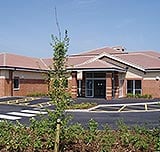
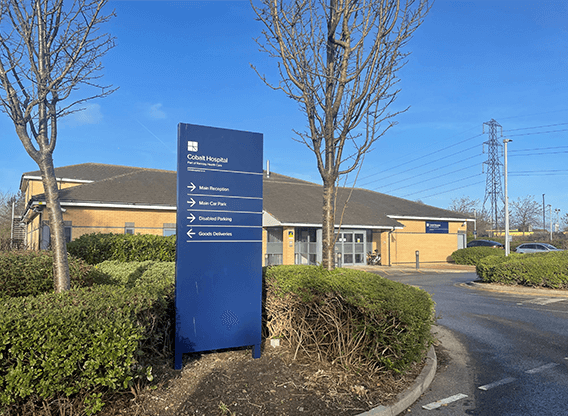
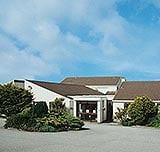

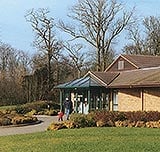
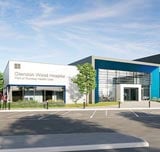
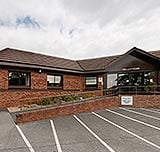


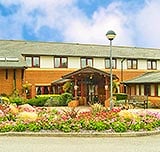
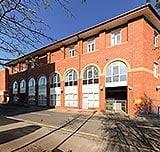
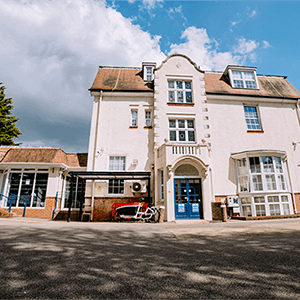
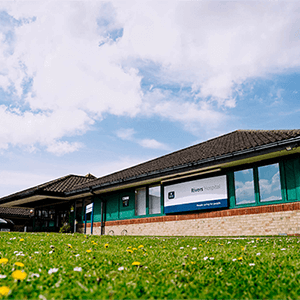

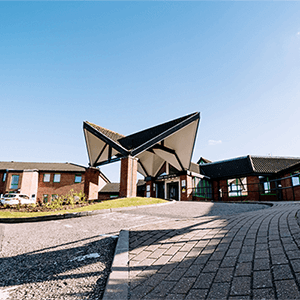
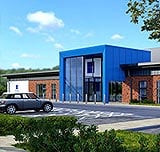


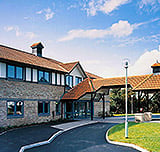

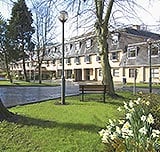
Clifton Park Hospital, in York, Part of Ramsay Health Care UK, has been shortlisted for the 2026 HSJ partnership award.
Ramsay Health Care UK are celebrating after being named as a Gold National Joint Registry (NJR) Quality Data Provider for the second year running, after successfully completing a national data quality audit programme for 25 hospitals offering orthopaedic procedures.
Duchy Hospital in Truro, proudly opened its state-of-the-art Imaging and Outpatient Suite representing a major investment in patient care, designed to enhance diagnostic capabilities and improve the overall experience for patients across Cornwall.
The information, including but not limited to, text, graphics, images and other material, contained on this website is for educational purposes only and not intended to be a substitute for medical advice, diagnosis or treatment. Always seek the advice of your physician or other qualified health care provider with any questions you may have regarding a medical condition or treatment.
No warranty or guarantee is made that the information contained on this website is complete or accurate in every respect. The testimonials, statements, and opinions presented on our website are applicable to the individuals depicted. Results will vary and may not be representative of the experience of others. Prior patient results are only provided as examples of what may be achievable. Individual results will vary and no guarantee is stated or implied by any photo use or any statement on this website.
Ramsay is a trusted provider of plastic or reconstructive surgery treatments as a part of our wrap-around holistic patient care. Our personal, friendly and professional team are here to support you throughout to ensure the best possible care. All procedures we perform are clinically justified.
*Acceptance is subject to status. Terms and conditions apply. Ramsay Health Care UK Operations Limited is authorised and regulated by the Financial Conduct authority under FRN 702886. Ramsay Healthcare UK Operations is acting as a credit broker to Chrysalis Finance Limited.
Ramsay Health Care UK is not currently recruiting for any roles based outside of England. If you are interested in applying for a role with Ramsay Health Care UK, please note that all available positions are advertised exclusively on our official website: https://www.ramsayhealth.co.uk/careers. Be cautious of individuals or organisations that approach you directly for remotely-based roles. Always verify the authenticity of the job offer and be careful with whom you share your personal information. For more information and advice on employment fraud, please visit: https://www.ramsayhealth.co.uk/careers/recruitment-fraud